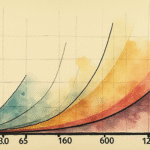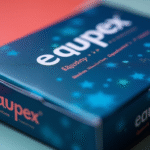Market Optimism Amidst Trade Negotiations Between US and China
The Mexican peso appreciated against the US dollar in Friday’s closing market, driven by optimism surrounding potential progress in trade negotiations between the United States and China. Despite fluctuating headlines, the local currency managed to end the week on a positive note.
Currency Performance
The exchange rate closed at 19.5223 pesos per dollar, marking a 5.86-centavo or 0.30% improvement compared to the previous day’s official closing rate of 19.5809 pesos, according to data from Banco de México (Banxico).
The dollar’s price ranged from a high of 19.6898 pesos to a low of 19.5125 pesos. The Intercontinental Exchange’s Dollar Index (DXY), which measures the dollar against six major reference currencies, increased by 0.31% to 99.60 units at the close.
Despite the unclear environment, the peso managed a positive week-end result. Compared to a reference price from LSEG on the previous Friday (excluding Banxico due to a holiday), the peso gained 19.01 centavos or 0.96%.
Changing Headlines and Negotiations
China’s government announced tariff exemptions for US imports, boosting expectations that the trade war between the world’s two largest economies would have a positive resolution for the market.
In an interview with Time magazine published on Friday, President Trump stated that his administration is negotiating with China to reach an agreement and mentioned that Chinese President Xi Jinping had called him on Tuesday. However, Beijing has disputed Trump’s interpretation.
Trump also commented that he would consider a “total victory” if the US had up to 50% tariffs on foreign imports within a year. The fluctuating headlines and lack of concrete announcements keep the currency in range.
Local Economy
The Mexican peso found support from a better-than-expected report on the country’s economic activity in February. This data challenged analysts’ predictions that Mexico might have fallen into a technical recession in Q1.
The Global Activity Index (IGAE) for Mexico grew by 1% in February, reported by INEGI on Friday. On an annual basis, it decreased by 0.7%. “With these figures, the country’s economic performance may be less weak than anticipated,” said analysts from Actinver.
Quásar Elizundia, Pepperstone’s strategist, stated that next week’s attention will be on preliminary GDP data. “Indications of continued slowdown would reinforce Banco de México’s moderate stance and exert additional pressure on the peso.”
Key Questions and Answers
- Q: What drove the Mexican peso’s appreciation against the US dollar?
A: Optimism surrounding potential progress in trade negotiations between the United States and China, along with a better-than-expected report on Mexico’s economic activity in February.
- Q: What tariff exemptions did China announce?
A: China’s government announced tariff exemptions for US imports.
- Q: How did Mexico’s economic performance fare in February?
A: The Global Activity Index (IGAE) for Mexico grew by 1% in February, challenging analysts’ predictions of a potential technical recession in Q1.
- Q: What impact could preliminary GDP data have on the Mexican peso?
A: Indications of continued slowdown in the Mexican economy could reinforce Banco de México’s moderate stance and exert additional pressure on the peso.






